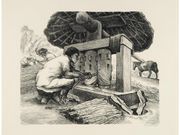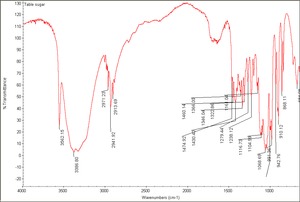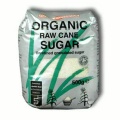Difference between revisions of "Sugar"
Jump to navigation
Jump to search
| Line 13: | Line 13: | ||
* Soluble in water. | * Soluble in water. | ||
* Hygroscopic. | * Hygroscopic. | ||
| − | * Density = 1.59 | + | * Density = 1.59 g/ml |
== Additional Images == | == Additional Images == | ||
Latest revision as of 12:44, 6 June 2022
Description
A photosynthesis product in plants. Sugar is an important source of metabolic energy in foods and its formation in plants is an essential factor in the life process. A sugar is a small Carbohydrate composed of one, two, or more saccharose groups. The chief monosaccharides are Glucose (dextrose) and Fructose (levulose). Some primary disaccharides are Sucrose (from cane or beet sugar); Lactose (from milk); Maltose (from Starch); and cellobiose (from Cellulose). Table sugar is primarily composed of sucrose.
Synonyms and Related Terms
sucre (Fr.); sucrose; cane sugar; beet sugar
Physical and Chemical Properties
- Soluble in water.
- Hygroscopic.
- Density = 1.59 g/ml
Additional Images
Resources and Citations
- V.Daniels, G.Lohneis, "Deterioration of Sugar Artifacts" Studies in Conservation 42:17-26, 1997.
- G.S.Brady, Materials Handbook, McGraw-Hill Book Co., New York, 1971 Comment: p. 777
- Richard S. Lewis, Hawley's Condensed Chemical Dictionary, Van Nostrand Reinhold, New York, 10th ed., 1993
- The American Heritage Dictionary or Encarta, via Microsoft Bookshelf 98, Microsoft Corp., 1998
- Art and Architecture Thesaurus Online, http://www.getty.edu/research/tools/vocabulary/aat/, J. Paul Getty Trust, Los Angeles, 2000
- CRC Handbook of Chemistry and Physics, Robert Weast (ed.), CRC Press, Boca Raton, Florida, v. 61, 1980




